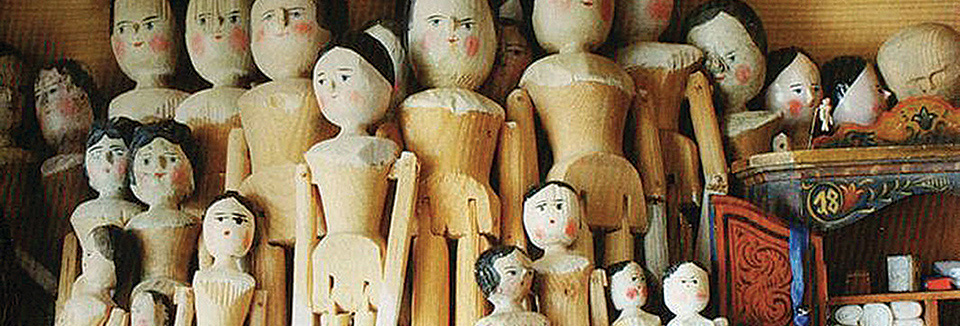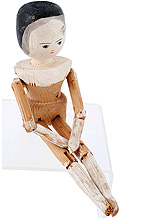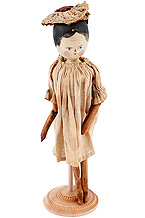





The Humble Peg Doll (and its royal connection)
Penny woodens, Dutch dolls, penny Gretchens, peg dolls, wooden-tops, plain Janes, wooden Bettys, timber tops - by whatever name you call them, for over four hundred years these traditional peg dolls were handmade by peasant families high up in the Dolomite Mountains of Italy, writes Kylie Richards.
The people in the alpine village of Val Gardena were at that time (in the 1600s) merchants in selling pillow lace and embroidery. They quickly learned to fill a gap in the market with the production of wooden toys, and families in the Netherlands and Germany followed suit.
Initially many simple and individual articles were produced, but they gradually became more detailed: from nativity figurines to animals, dolls in different sizes, horses and rocking horses and moveable toys, all made by meticulous hand carving and handicraft.
The dolls were sold undressed and children would then make their clothing from scraps of fabric. At first the toys were unpainted because the technique of colouring was unknown, but in years to come painting techniques were learned. Modern-day peg doll artisan Judith Sotriffer notes, "Because of its particular brightness, the distemper was preferred for the colouring of the toys, comprising bone glue mixed with a variety of different pigments."
During the middle of the 17th century about fifty toy manufacturing families were known to be in operation, but after a short time the number raised dramatically and by the 18th century the whole population of the German town of Groden lived on this cottage industry.
The wooden dolls were constructed using a jointing technique in which the arms and/or legs were attached to the body with pegs. Sometimes a peg wooden doll's arms or legs were locked together by the jointing system, so if one arm was moved the other would also move. An advanced form of peg joints is where the body pegs are 'split' and attached separately, allowing independent movement.
The tradition of making wooden toys and peg dolls was lost in the 1930s but has since been revived and continues in the Dolomite Mountains to this day. Following the family and town tradition, artisan Judith Sotriffer hand carves and lovingly paints in two styles - straight leg, or jointed at the knee - in sizes from miniature (the size of your fingernail), to around one metre in height. Judith makes her dolls in the traditional style but also developed a jointed version which gives more flexibility.
Being some of the oldest dolls known worldwide, penny or peg wooden dolls are of historical interest. In the London Museum there is a set dressed by Princess Victoria (later to become Queen) using scraps of fabric that came to hand in the Palace in the 1830s, and the peg doll also appears in many Victorian children's books, notably in Florence Upton's Golliwogg series (The Adventures of Two Dutch Dolls and a Golliwogg) and in stories by Kathleen Ainsley.
The dolls photographed here are from the stock of Herr Insam. In addition to the making of toys, the Insams (a family of woodcarvers) undertook the exporting of religious carvings, one of the principal industries of the peasant families in the Dolomites. As they were enterprising businessmen, by 1900 the Insams had established branches in Nuremberg, Germany and had agents in many different countries.
It was WWI that put an end to these activities and the manufacture of toys. However, there remained in the garden of one of the members of the Insam family a large barn full of these dolls, collected years before and ready for dispatch, but rendered unsaleable because of the war. After the conflict ended they were sold to the famous Pollock's Toy Museum in London.
It is difficult to say the exact age of these penny wooden dolls, which had been stored in the barn since 1914, but Pollock's Toy Museum suggests 1890 to 1910 and this fits with many other peg dolls dating to that era.
Peg dolls dating from the late 1800s sell in varying condition for anything from $100 to $1000. Judith Sotriffer's hand carved peg dolls fall into the same category.
This information first appeared in the Winter 2017 issue of Antiques and Collectables for Pleasure & Profit.